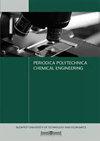反渗透(RO)、多级闪蒸(MSF)和多效蒸馏(MED)三种海水淡化技术的碳足迹研究
IF 1.8
4区 工程技术
Q3 ENGINEERING, CHEMICAL
引用次数: 3
摘要
如今,饮用水短缺问题日益严重,主要原因是人口快速增长、气候变化、过度浪费用水和污染。在目前的情况下,世界上四分之一的人口将无法获得优质的饮用水。因此,在淡水不足的地区必须采取另一种解决办法。一条可能的路线是海水淡化,这是解决沿石油供应海岸的饮用水短缺问题的最实用的解决方案之一,并将继续在全球范围内扩展。产生的水也可用于灌溉,减少一个地区对进口的依赖,促进当地经济,并改善粮食供应。然而,这个过程不是一个没有后果的过程;它可能会造成一些环境和人类健康问题。最常用的三种海水淡化技术是反渗透(RO)、多级闪蒸(MSF)和多效蒸馏(MED)。本研究基于SimaPro生命周期分析软件生命周期评估(LCA)和碳足迹两种方法,研究了这三种技术结合化石能源和可再生能源生产的海水饮用水的温室气体(ghg)排放。因此,RO技术的二氧化碳排放量明显低于热技术。RO结合可再生能源是最环保的;在人类健康和生态系统质量方面提供了突出的好处。这项技术在未来可能会不断发展,以生产更持久、更便宜的膜,并且随着现代能量回收系统的应用,该过程的能源需求也会降低。本文章由计算机程序翻译,如有差异,请以英文原文为准。
Investigation of Carbon Footprints of Three Desalination Technologies: Reverse Osmosis (RO), Multi-Stage Flash Distillation (MSF) and Multi-Effect Distillation (MED)
Nowadays, the drinking water shortage is increasing, mainly due to rapid population growth, climate change, wasteful overuse of water, and pollution. Under the current circumstances, a quarter of the world's population will not have access to good quality drinking water. Thus, another solution must be adopted in areas with insufficient freshwater. One possible line is the desalination of seawater, one of the most practical solutions to solve the problem of drinking water shortage along the oil availability shore and continues to expand globally. Water produced may also be utilized for irrigation, reducing a region's reliance on imports, contributing to the local economy, and improving food supplies. However, this process is not a consequences-free procedure; it may cause several environmental and human health problems.The three most applied desalination technologies are reverse osmosis (RO), multi-stage flash distillation (MSF), and multi-effect distillation (MED). In this study, the emissions of greenhouse gases (GHGs) of drinking water produced from seawater using these three technologies with fossil and renewable energy sources were investigated based on two methods: life cycle assessment (LCA) using SimaPro life cycle analysis software and carbon footprints. As a result, RO technology has significantly lower CO2 emissions than thermal technologies. The RO combined renewable energy is the most environmentally friendly; provides outstanding benefits in terms of human health and ecosystem quality. This technology may still evolve in the future to produce longer-lasting, cheaper membranes, and the energy requirements of this process are lower with applying modern energy recovery systems.
求助全文
通过发布文献求助,成功后即可免费获取论文全文。
去求助
来源期刊

Periodica Polytechnica Chemical Engineering
ENGINEERING, CHEMICAL-
CiteScore
3.10
自引率
7.70%
发文量
44
审稿时长
>12 weeks
期刊介绍:
The main scope of the journal is to publish original research articles in the wide field of chemical engineering including environmental and bioengineering.
 求助内容:
求助内容: 应助结果提醒方式:
应助结果提醒方式:


